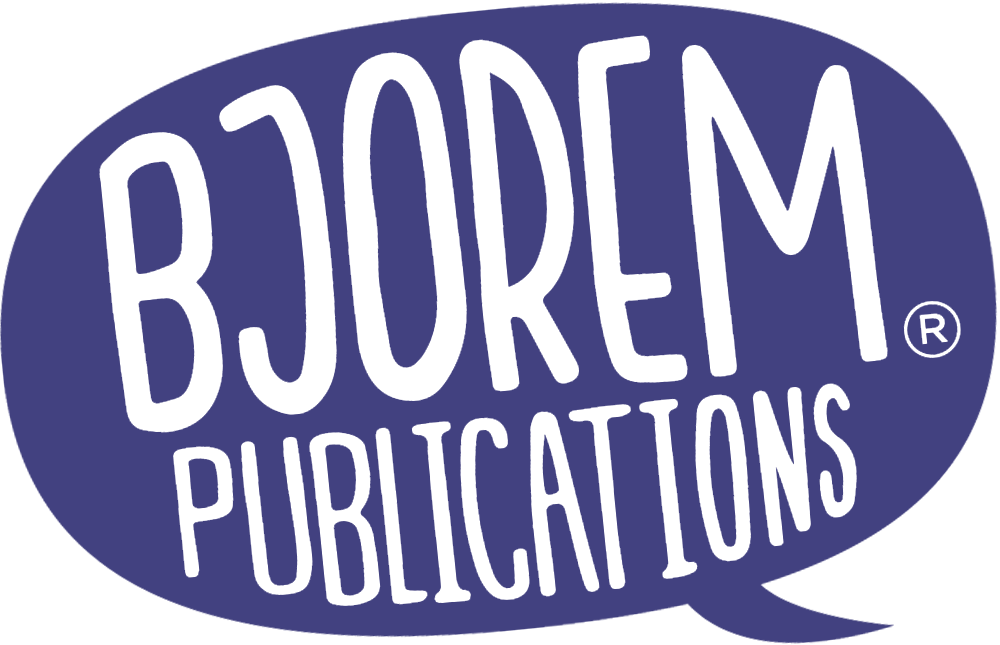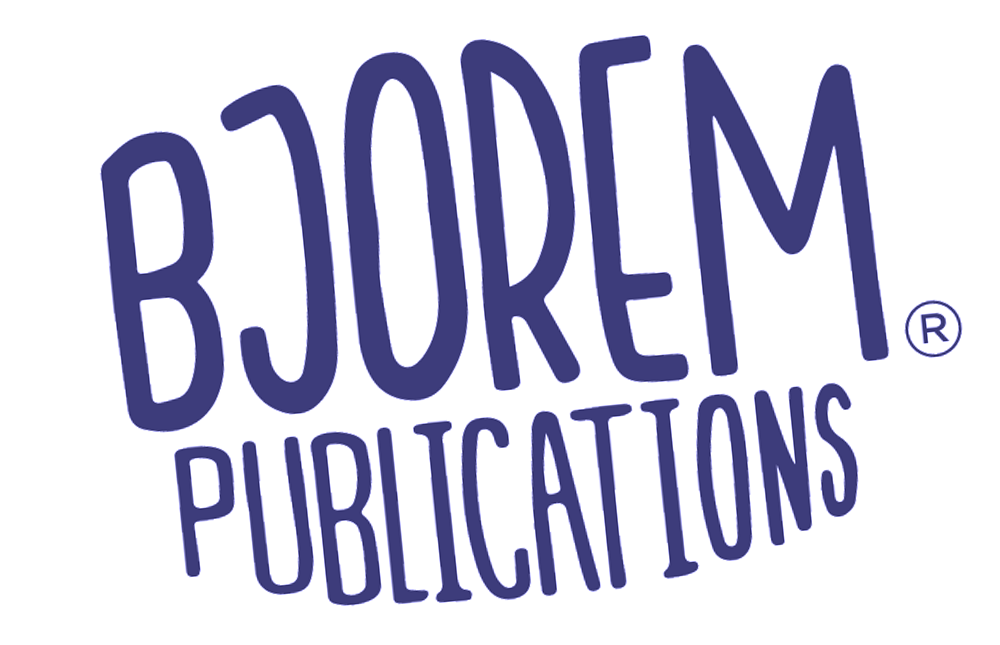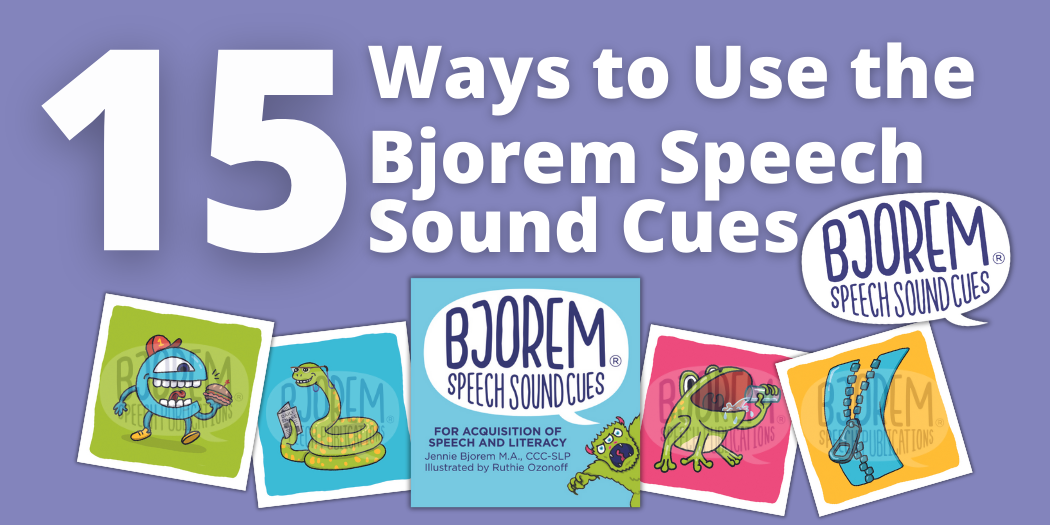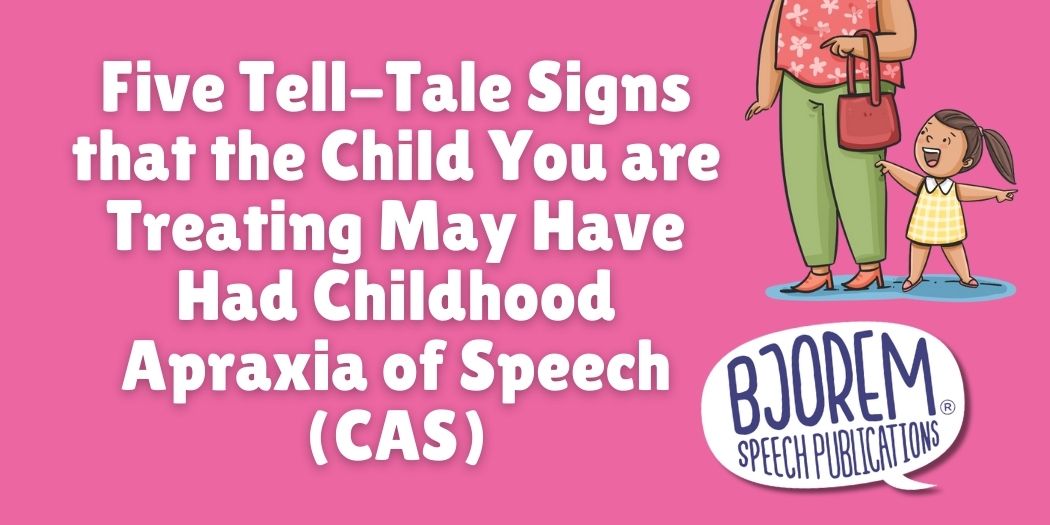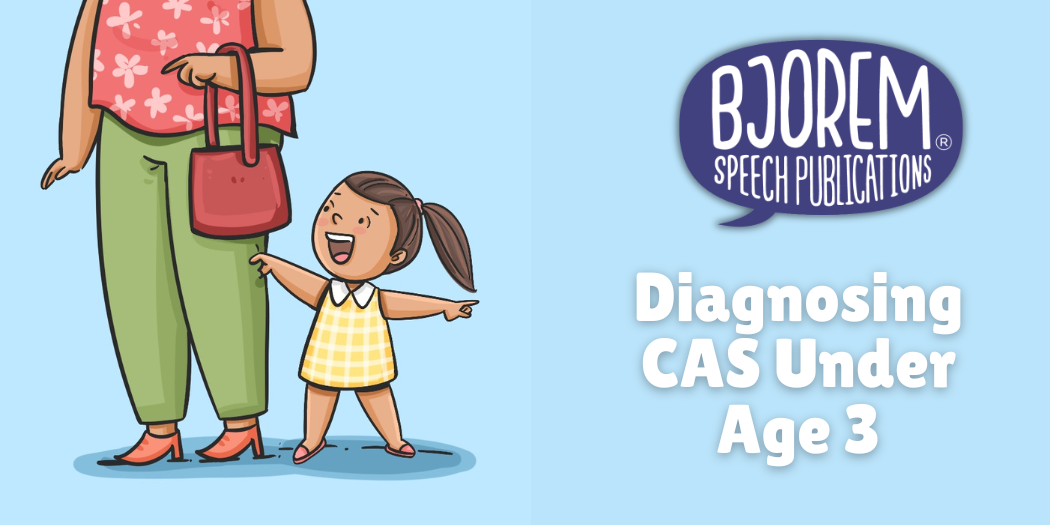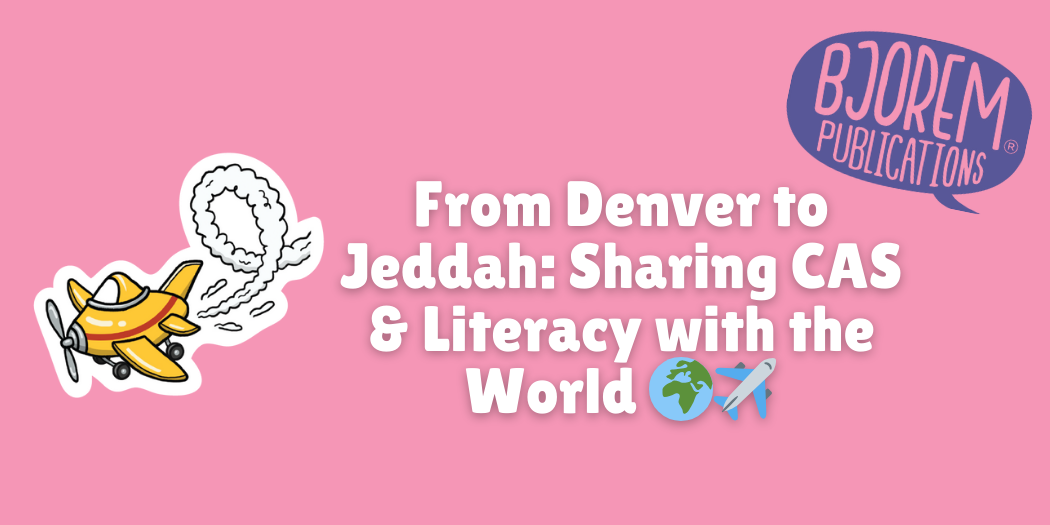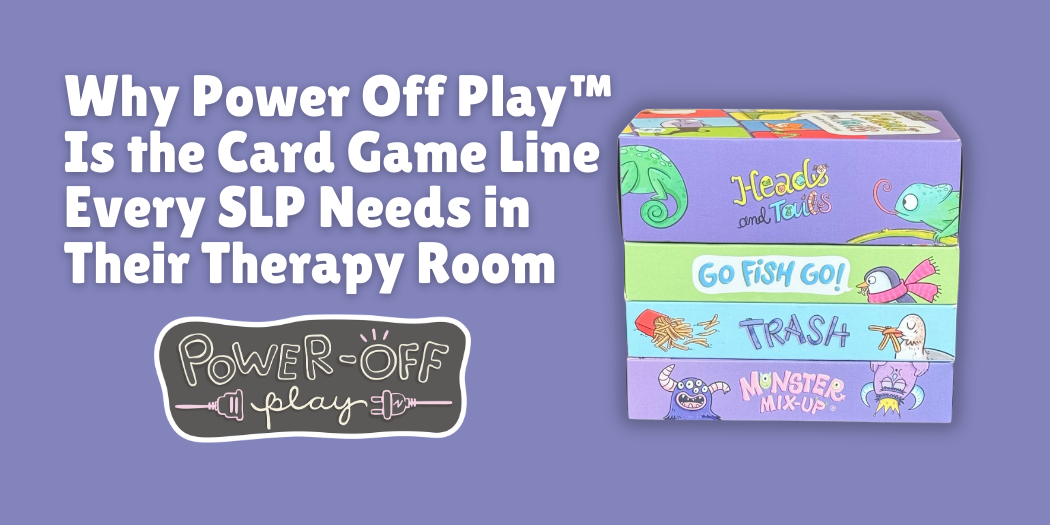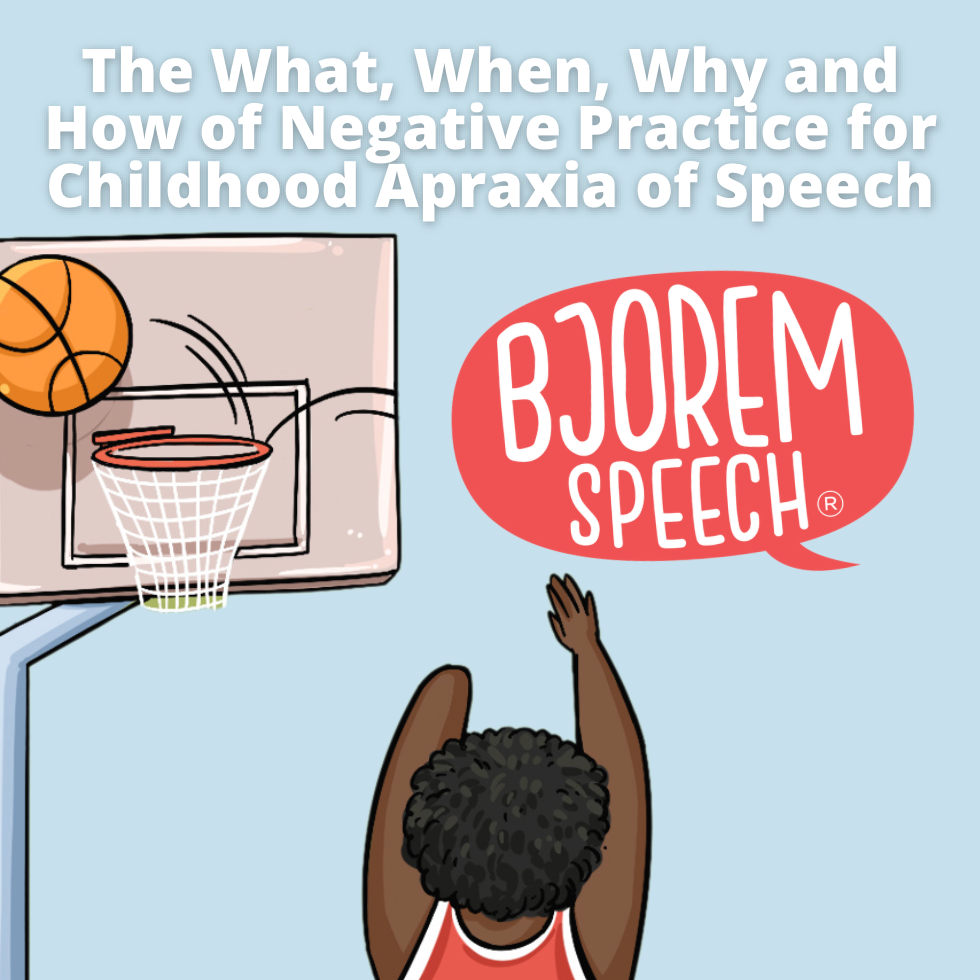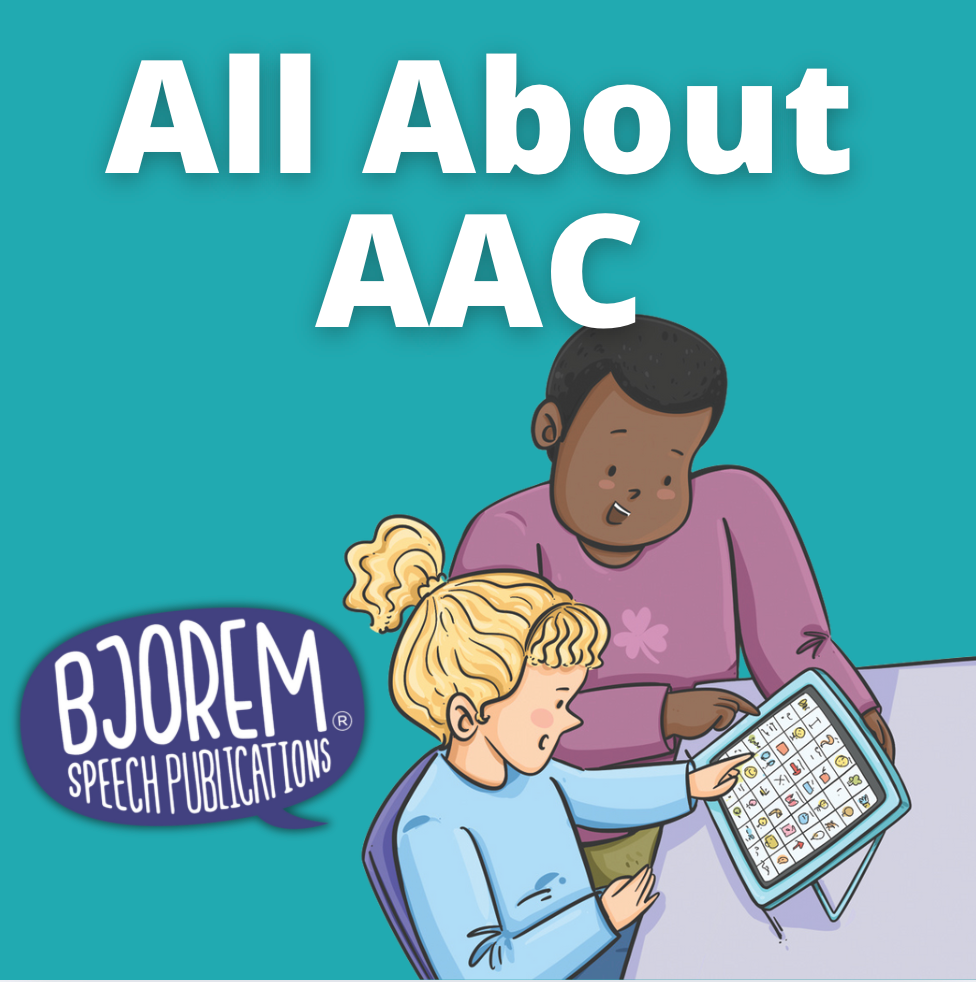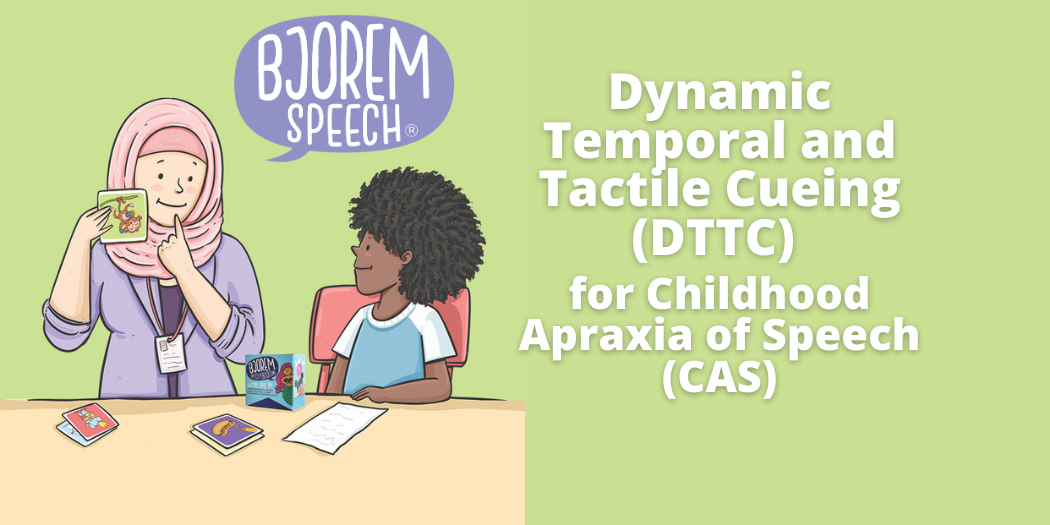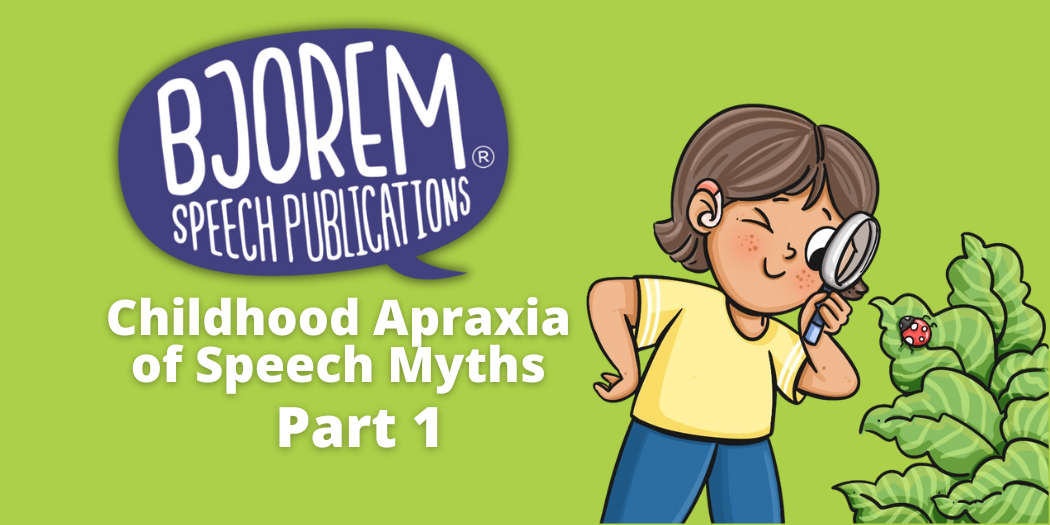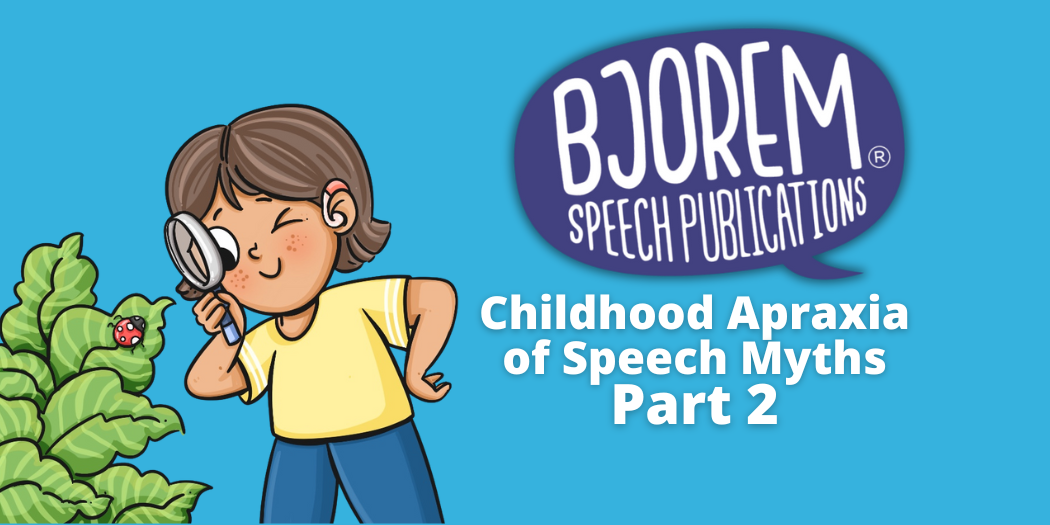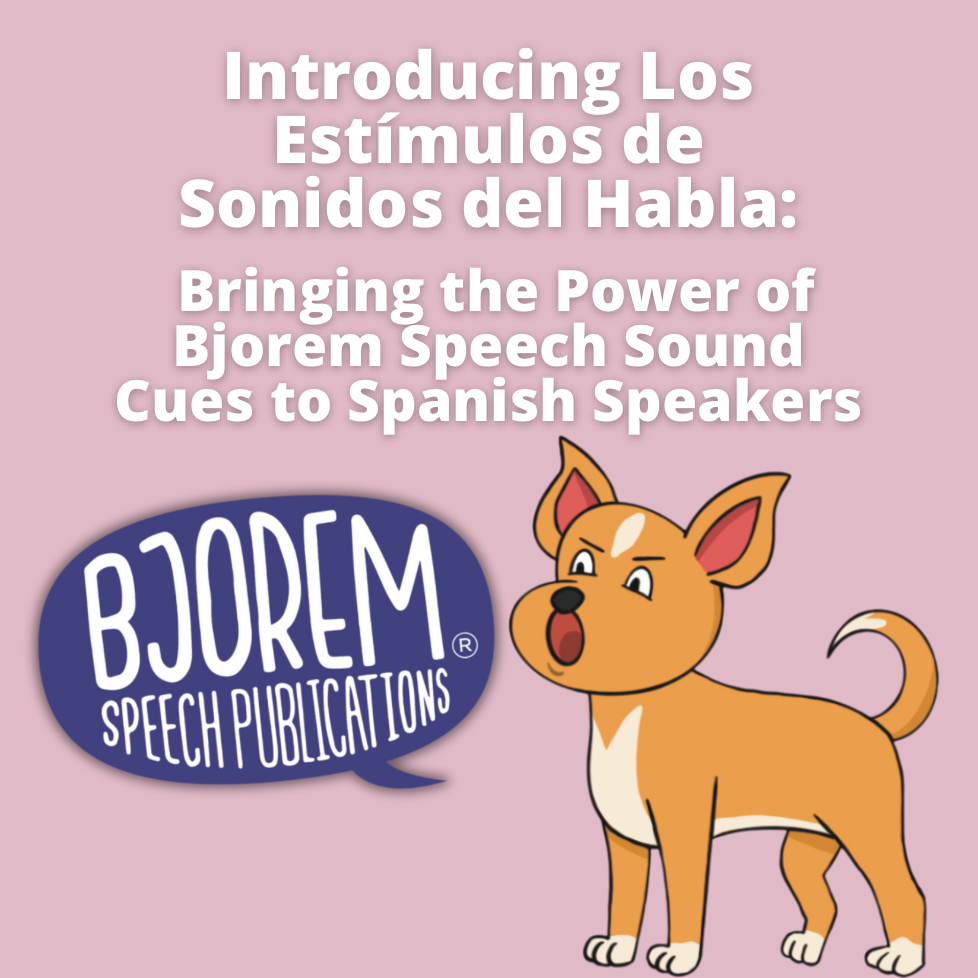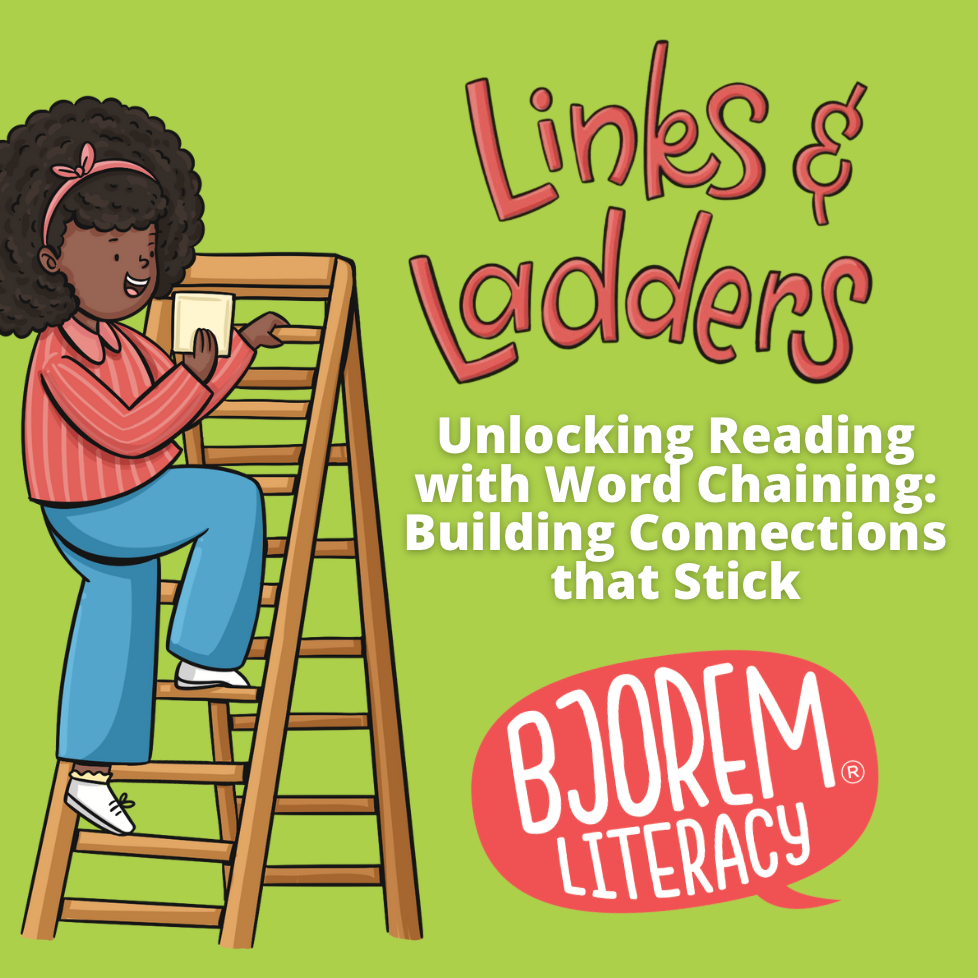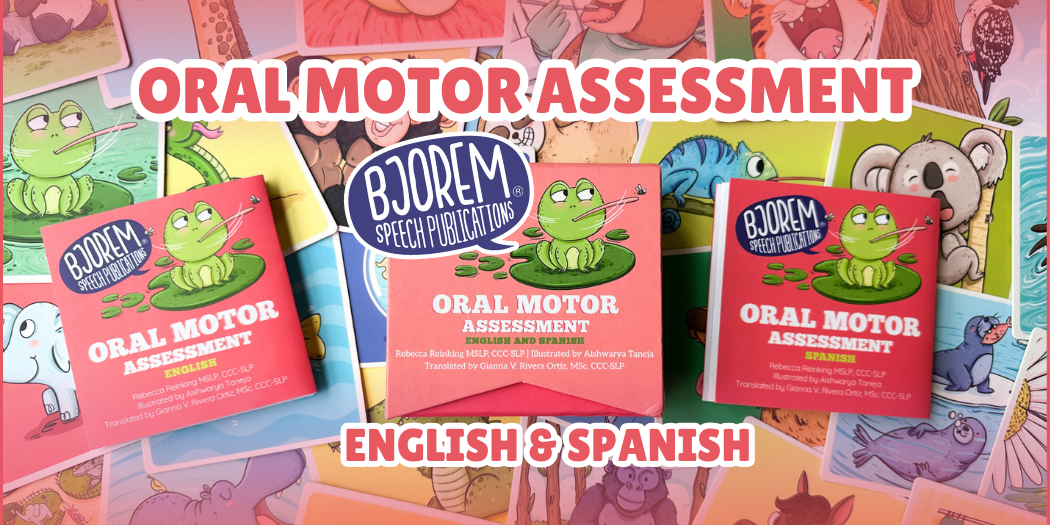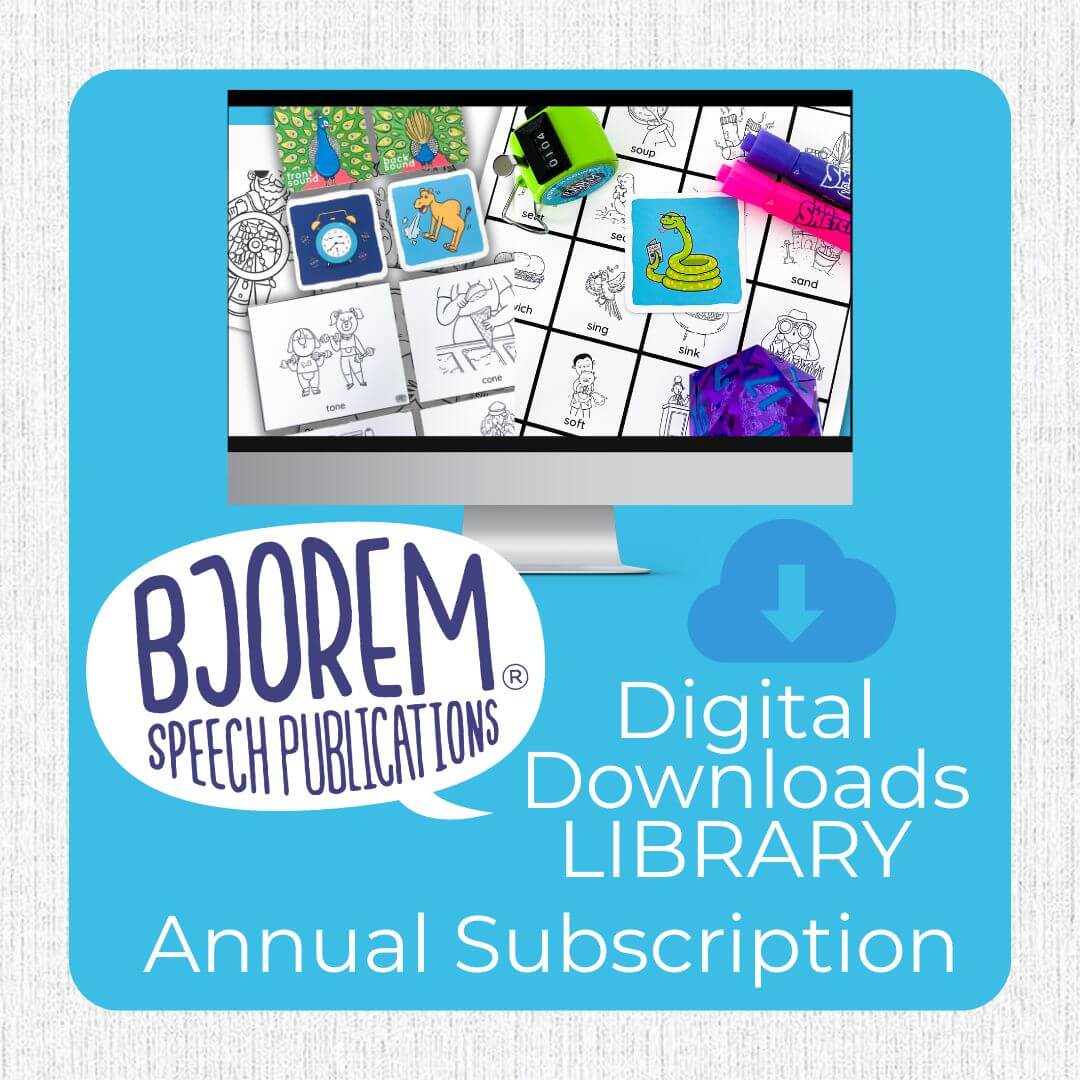If you have been using the Bjorem Speech Sound Cues, you probably have found several different ways to use them in your therapy sessions or at home with your child. If you haven’t yet used the Bjorem Speech Sound Cues this will help you get started.
The Bjorem Speech Sound Cues are picture cues that represent each phoneme in the English language through the use of an environmental sound children can relate to! The sound cues come in the original size and the BIG Box.
Here is a list of my TOP 15 FAVORITE ways to use the original set of Bjorem Speech Sound Cues!
1. Keep the cues close. You can easily introduce a sound cue in the child’s daily routine and during play! Think about the sounds children use in play and label using the sound cues. This is a very natural way to begin talking about sounds with children and they begin to understand the association very quickly!

2. Know the Names: Fading cues is REALLY important, our goal is for the child to produce targets without our help or cueing. When using the Bjorem Speech Sound Cues get to know the name of the cue and use it frequently with the child. e.g., popcorn sound. It is amazing how quickly they pick it up and you are able to fade modeling and visual cues by just naming the sound you are looking for!
3. Sound Inventory – Use the sound cues to get a sound inventory from a child. Kids love going through the deck of cues imitating the silly sounds. Keep track of the sounds the child does have and document as new sounds are acquired! I typically document using a date so that we can show parents a timeline of sound acquisition.

4. Combine Sounds– Combine cues to show the child the sounds involved in the movement. This is helpful when you are beyond the simultaneous production stage when using DTTC approach. Just another tool in the cueing kit to help with motor planning.
TIPS:
- If the child is missing a sound take one away and show them
- If the child adds a sound or is distorting a sound add or change the sound and show them
- If the child is segmenting or using inappropriate pausing pull the cues apart and show them

5. Family Involvement – Get creative, think of all the functional ways you can use the cues. Here mom was targeting “wawa” for water. He said the word with his cue and was then allowed to jump into the water. Educating families the difference between letters and sounds is a big part of our job. No only that, but the make-up of sounds and why we do what we do! The sound cues can be difficult to wrap your brain around when you think in terms of letters, but switching the mindset to sounds for families is easier with the sound cues.
** Mom copied and laminated the cues so she could use them in the pool. GENIUS!

6. Phonemic Awareness– Hey, SLPs, did you know that you are doing phonemic awareness work each time you address speech sound disorders? That’s right! Because, whenever you are addressing speech sounds, you are manipulating the child’s sound production and perception. Let’s take an example. You’re targeting initial /k/, and the child says “tat” for cat. You may say something like, “Tat?! What’s a tat? We need your coughing camel sound, not your tick tock sound!” Look at that! You just drew the child’s attention to a sound substitution. This is a manipulation of individual sounds and is, therefore, phonemic awareness. Check out Bjorem Speech’s full phonemic awareness packet which includes the bus and sound cue visual pictured below.

7. Vowel Work– vowels can be tricky in discriminating, spelling and sometimes even motor planning. The Bjorem Speech Sound Cues are an excellent resource for young as well as older children. Think about hearing the difference and understand ding spelling patterns when it comes to vowels. The visual cues are an excellent bridge to being able to understand these tricky sounds.

8. Substitutions & Additions – Bjorem Speech Sound Cues are not only good for cueing the Bjorem Speech Sound Cues are not only good for cueing the sounds and sound combinations you want the child to use but also cueing for sounds you DON’T want the child to use! Many times children don’t realize they are adding an extra sound or are using the incorrect sound. Simply show the child with the visual cue the sound they are adding and “throw it out”! OR show the the sound they are using and how it makes the word “sound different” then show the child the sound you want them to use and what it sounds like. @herdofhills suggests “Smashing the Intrusive Schwa” by smashing the sound with a fist e.g., no-uh for no or gulue for glue. Visual cueing is a great way show what we don’t want and it is also a great way to fade that verbal cue children tend to rely on!

9. Sound-to-Letter Correspondence – Whenever you are working on speech sound work with early readers, keep in mind that you’re also addressing pre-literacy skills! Make sure to write the words or the letters next to your sound cues so the child can start implicitly building sound-to-letter correspondence. Integrating pre-literacy work with speech therapy is surprisingly easy! And the benefits are huge! Read more about pre-literacy work here.

10. LISTEN… what do you hear?? When working on sound discrimination with clients, I love using the sound cues and pairing them with the letter. Do you hear what I hear? I will place the two sounds the child is having a difficult time “hearing” the difference have them practice listening, kids can earn snacks, stickers, pennies, miniatures… whatever you can think of! Aaaaand all of the early literacy benefits. Get creative, there are so many games you can play to help kids hear the difference!

11. Cue for Coarticulation – Those tricky words that are spelled different than they sound or how we say them naturally can be easily cued using the Sound Cues. For example we spell “I do it” but we say “I do wi” or we spell “stop” but we say “sdop”… all because of coarticulation. This is especially important when working with children with apraxia or children that over articulate making their speech sound choppy or unnatural. Check out this video about co-articulation on my YouTube channel or this Instagram Reel

12. Cueing Single Sound Errors – When working on single sound errors, I find it very helpful to have the cue out and available to help cue the child for the sound that we are targeting. I have found many times this decreases the amount of “verbal” cues needed from me. I love pairing the cues with Articulation Station by Little Bee Speech.

13. Pair cues with your model. The cues are the perfect size to hold up next to your face to encourage children to look and watch the cue combination of mouth movement and sound cue. Don’t forget to also pair a sign with each cue to help increase understanding. This is also a great way to fade cues. Once the child knows cues and signs you may just use the sign to help facilitate the correct sound. Check out this video with hand signs for the consonant sounds.

14. Books! When reading with your clients or child pull sound cues that start frequent repetitive words in the books. This will help children begin to identify or associate that cue with the sound as well as encourage production. Check out our OH NO Pee Pee and OH NO Poo Poo books that are a huge hit with littles.

15. Minimal Pairs – Using the Bjorem Speech Sound Cues with minimal pairs gives the child that extra support when understanding the sound difference. Pair the sound cues when using minimal pairs for the changing phoneme. For example if you are targeting “car” but the child fronts the sound and says “tar” show them using the cues which sound they are using and how it changes the meaning of the word.

Thanks for reading and if you have any ideas on how to use the Bjorem Speech Sound Cues please let us know! We are happy to share with our followers so we can all grow and learn together! – Jennie Bjorem, M.A., CCC-SLP
The Bjorem Speech Sound Cues come in two sizes, the original deck where cards are 2"x 2" and the BIG BOX where cards are 4" x 4".
